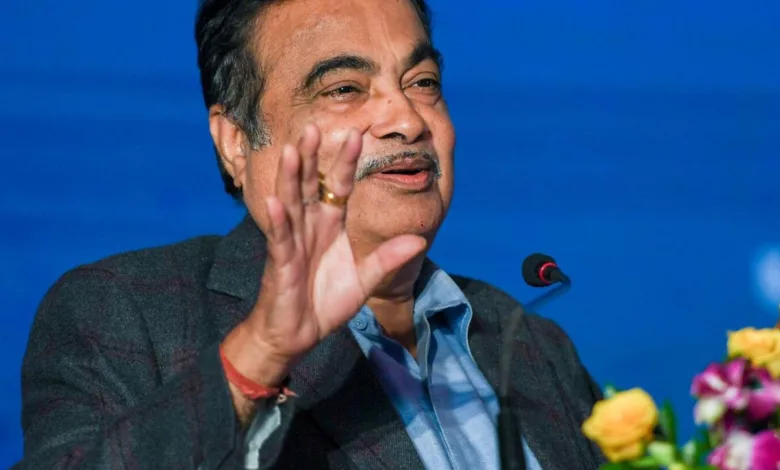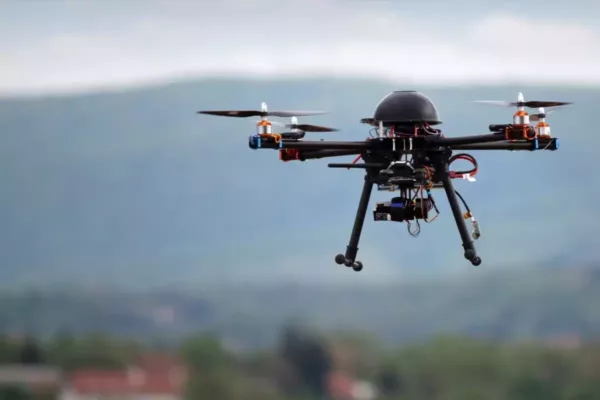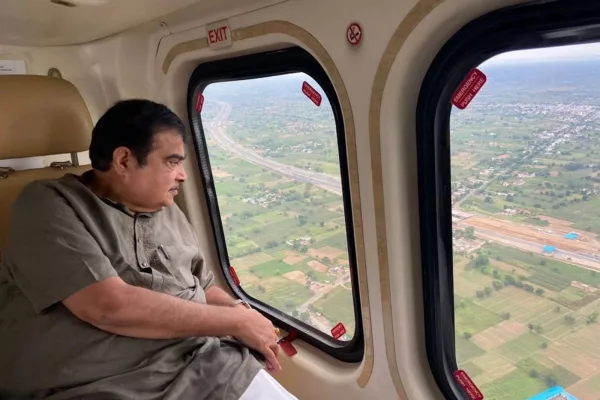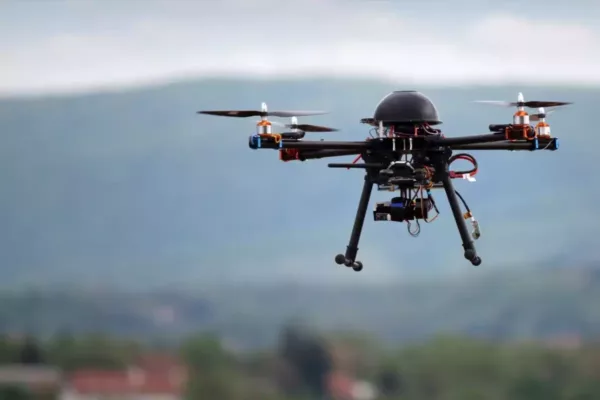Use Of Drones For Highway Surveillance Will Be Put Out To Bid: Gadkari

Use Of Drones For Highway Surveillance Will Be Put Out To Bid: Gadkari
HIGHLIGHTS
- The Skye UTM sophisticated drone air traffic system was unveiled by Nitin Gadkari to monitor highways and track deadly car accidents.
- According to Nitin Gadkari, the emphasis of this technology is on new technologies in the infrastructure, highway, and construction sectors, and it is now up to Indian companies to dominate the drone market.
- For real-time surveillance, to hasten the construction of highways, and to keep an eye on fatal traffic incidents, MORTH will welcome startup drone companies to join. The government will soon announce a request for bids to carry out this operation.
Skye UTM, a state-of-the-art drone air traffic system, was recently introduced by Nitin Gadkari, MORTH (Minister of Road Transport and Highways). With capacity, it can handle around 4,000 planes per hour and 96,000 flights per day. It’s a combination of manned aviation space and a cloud-based aerial traffic management system used to handle unmanned air traffic.
Situational awareness, autonomous navigation, risk assessment, and traffic management have all been taken into consideration when designing the Skye UTM sophisticated drone air traffic system for all aerial mobility operators operating throughout the area.
Observations regarding technology According to Nitin Gadkari, the emphasis of this technology is on new technologies in the infrastructure, highway, and construction sectors, and it is now up to Indian companies to dominate the drone market.
During the event, Nitin Gadkari remarked, “Drones will be used in several sectors, particularly real estate, architecture, agribusiness, healthcare, military, and transportation. Drone companies will keep an eye on even new road construction and motorways. Numerous research projects are presently being carried out that will surely help increase its use “.

He continued by saying that the MORTH would encourage new drone companies to take part in real-time monitoring, speed up highway building, and keep an eye on fatal traffic incidents. The government will soon announce a request for bids to carry out this operation.
Ankit Kumar, CEO of Skye Air, said about the event, “Skye UTM is a game changer in this regard because it gives both regulators and pilots situational awareness by digitally connecting traffic across the airspace and communicating with drones.”
Keep track of fatal road crashes
Road safety has once again come to light as a result of the terrible death of Cyrus Mistry, the former chairman of the Tata Group, on September 4. His failure to wear a rear seat belt and the overspeeding of the vehicle in which he was travelling were both revealed by the preliminary investigation.
Nitin Gadkari, the Union minister for highways and road transportation, has declared that he will severely enforce the use of rear seat belts and that offenders will be penalised in the wake of this occurrence. In addition, he requested that automakers add a seat belt alert system for rear seats, much like they do for front seats.
TERRIFYING SCENARIO: 18 LIVES ARE LOST IN ROAD ACCIDENTS EVERY HOUR
This is not the first time a well-known person has perished in a car accident. From Rajesh Pilot to Sahib Singh Verma, India has had several politicians, celebrities, and businessmen die in traffic accidents. In truth, India has a horrible reputation when it comes to traffic accidents. In actuality, more than a lakh people pass away on highways each year. India agreed to sign the Brasalia agreement in 2015, promising to cut down on traffic accidents by 50% by 2020.
4.03 lakh “road collisions” occurred nationwide in the previous year (2021), resulting in up to 1.55 lakh fatalities. The number amounts to almost 400 deaths every day or 18 deaths per hour. Additionally, 3.71 lakh individuals were injured in road accidents, according to data from the “Accidental Deaths & Suicides in India – 2021” report by the National Crime Records Bureau (NCRB). The number of traffic accidents was 4.37 lakh in 2020 and 3.54 lakh in 2019.
OVERSPEEDING IS A KEY CAUSE OF ROAD ACCIDENTS

Road crashes have overspeeding as their primary cause. Data from the NCRB show that 2,40,828 of the 4,03,116 instances that occurred in 2021 were solely attributable to overspeeding. It accounts for more than half of all accidents at 59.7%. It asserted 87,050 lives and injured 2,28,274 people. The second main reason—dangerous/careless driving or overtaking—came next. The latter resulted in 1,03,629 wrecks, or 25.7% of all accidents, with 42,853 fatalities and 91,893 injuries.
In India, actions to reduce speeding might prevent 20,554 deaths, and campaigns to promote crash helmet use could prevent 5,683 deaths, according to the most recent Lancet analysis. Additionally, encouraging seatbelt use could prevent 3,204 deaths nationwide.
“Education and enforcement are crucial for reducing the number of fatal traffic accidents that are caused by speed. It has been demonstrated that lowering speed limits, even by 5 km/h, can reduce crashes, “Robert Beaudry, a partner in the Bloomberg Initiative for Global Road Safety and the project manager for the International Association of Chiefs of Overtaking Police, said (BIGRS).
EARLY DETECTION AND REMEDIATION OF ROAD DEFECTS
Additionally, there are businesses like RoadMetrics that indirectly assist end users by identifying and repairing road faults. The business maps street and road data in great detail. Its software can classify road faults using picture and sensor data from a basic smartphone. Customers of the business include private infrastructure providers, city governments, and councils. The data is gathered by mounting a smartphone on the windscreen of the vehicle and operating the vehicle while using the app’s data-gathering features.
The interest of corporations was also expressed.
Even corporations are stepping up their efforts in the area of road safety. With the use of an AI-based driver assistance system, Intel India has promised to work towards cutting the number of road crashes in the nation in half by 2025. To provide a safety solution for Indian roads, it is said to have gathered 3 million kilometres of road data in collaboration with IIIT Hyderabad and CSIR-CRRI.
At the Safety Pioneers Conference held here today, Intel Onboard Fleet Services, an AI-powered fleet safety solution for commercial vehicles, was presented. Features like CAS (Collision Avoidance Systems), driver monitoring, fleet telematics, fleet health, and fuel efficiency are all part of the system, which uses bespoke algorithms to account for the unique characteristics of driving in India. The programme is now being tested in Nagpur as a pilot project, and it will soon be deployed in other cities.
MORE STARTUPS ARE NEEDED IN THE ROAD SAFETY ARENA

Even while startups are commonplace in fields like education technology, financial services, and software as a service (SaaS), the road business is still predominantly dominated by established companies, says Amit Kumar Ghosh, Ministry of Road Transport and Highways. The data are in favour of this.
The statistics support this. There are just 12 startups in the field of road safety, according to the research portal Tracxn, just four of which are supported. Ghosh asserts that there are multiple prospects for businesses in untapped industries. What therefore can be the cause of the lack of startups in the field of road safety?
Alam claims, “According to me, one of the key causes is that, historically, road safety has been viewed as a “social responsibility” rather than a “commercial opportunity.” Take seat belts in automobiles, helmets, and other safety gear as examples.
All of these items are intended to promote road safety, but they have also become profitable business ventures. We are adamant that a technology or company must be sustained through a workable business model rather than through grants if it is to have an impact.”
The government has already made substantial investments in supporting businesses that increase road safety, the speaker says. They provide rules that can aid entrepreneurs in developing a strong business model. The announcement that six airbags would soon be required in all vehicles gives everyone a chance to research how to fit six airbags in even the smallest of cars.
The main problem with this market is that it would be slow to catch on because it calls for changes in both user and business behaviour.” Naidoo strongly agrees “Sadly, there isn’t a culture of safety in underdeveloped nations. Many businesspeople believe that there is no room for innovation in raising traffic safety. But this is the ideal time for them to approach the vicinity. As Indians become more wealthy and seek out ways to safeguard their assets and well-being, safety is increasingly seen as a business.
Edited by Prakriti Arora




